My working title for this series was 'Treasures of Central India', but since that would mean an awkward 3-line header for some of the pieces, I shall use the abbreviated one. There will be 8 instalments altogether, covering a recent journey from Gwalior to Aurangabad by rail and road.
Actually, our journey started in Delhi and ended in Mumbai, but we spent only one night in each place – we had been to Delhi before and our plans for sightseeing in Mumbai were scuppered by flight schedule changes.
I will therefore start the series with Gwalior, a city some 120km south of Agra which we had wanted to visit for some time. The rail journey there nearly went badly wrong when our pre-arranged transport from the hotel to New Delhi station did not turn up. We addressed that issue by taking a taxi, but then it turned out that our train had been re-scheduled to leave from a different station several kilometres away. A further (frantic!) taxi ride through dense traffic later, we found ourselves dragging our luggage up and down various sets of stairs to get to the correct platform. We made it with just a couple of minutes to spare – it took somewhat longer for our breathing to return to normal!
Anyway, the next day we embarked on our sightseeing programme in Gwalior. Its most famous sight is the huge fort that sits atop a rocky plateau overlooking the city. The photo at the beginning of this piece shows part of the fort – more specifically, the impressive Man Mandir palace, which is located within the fort. The shot just above and the two below also depict various parts of the palace's exterior.
It is easy to see why pictures like these have been used in many publications as 'archetypal' images of India. We spent quite a bit of time marvelling at the magnificent views in front of us.
The palace is just over 500 years old, but other parts of the fort date back to the end of the first millennium. The fort changed hands numerous times and some of its conquerors used sections of the building as a prison. The next photo shows one of the picturesque interior courtyards. A narrow staircase leads down from here to various rooms which once functioned as grisly dungeons.
Not far from the palace is this unusual, round stepwell.
The fort also contains a number of temples. Pictured below are the Sas-Bahu – the 'mother-in-law and daughter-in-law' – temples. They date from the 11th century.
A short distance away is the very tall Teli Ka Mandir temple. The plaque by the entrance states its height as 30 metres and suggests it was constructed in the 9th century.
There is a modern Sikh temple nearby. (Indeed, the fort plays an important role in the history of the Sikh religion, through the imprisonment here of Guru Har Gobind Sahib. The following link: http://www.sikhiwiki.org/index...ata_Bandi_Chor_Sahib provides details.
Followers of Jainism have also left their mark on Gwalior's fort. The western approach road to the fort leads past a string of Jain cave monuments and statues which have been cut into the rock.
These – very impressive – monuments are thought to date from the 15th century.
Away from the fort, the sightseeing agenda calls for a visit to the tomb of Ghaus Mohammed, a 16th century Sufi saint. The tomb is a fine example of early Mughal architecture. Of Afghan origin, Ghaus Mohammed is thought to have been an advisor to King Babur and the spiritual master of Tansen, a famous singer at the time. Tansen's tomb is on the same site, but is much more modest in size.
Another must-see sight in Gwalior is the Jai Vilas palace, dating from the second half of the 19th century. It was commissioned by the then Maharaja of Gwalior, Jayaji Rao Scindia, and today serves both as a museum and a residence for the descendants of the Maratha Scindia family.
The palace's huge Durbar Hall is particularly impressive.
On display in the enormous dining room is the Maharaja's silver toy train, which was used to distribute after-dinner drinks, cigars, etc. to his guests. If you want to see the train in action, here is a brief video:
Many palaces and mansions in this part of the world have collections of vintage cars. Usually they contain rare examples of prestigious brands/models, but here we came across this BMW Isetta 300 from the late 1950s or early 1960s. I remember one of my parents' friends having one of these and have a faint recollection of actually sitting in it as a child.
The grounds surrounding the Jai Vilas palace are extensive. Another property within the original boundaries, the Usha Kiran palace, has been turned into a pleasant heritage hotel, run by the Taj group. We were lucky enough to stay there – and to be given an upgrade to a palatial suite of rooms overlooking the main entrance.
The Usha Kiran palace has its own large gardens, which seem to attract a variety of interesting birds. I like this (lucky) shot of the parakeet sitting on the cobra fountain by the entrance.
The city itself turned out to be a lot more pleasant than we expected. There are very few modern high-rise developments and Gwalior retains the comfortable feeling of a provincial town, despite its size. The large square in the centre is surrounded by a number of interesting buildings in different architectural styles.
Air quality can apparently be a big problem in Gwalior at certain times of the year, but during our three-day stay there was always a light breeze, which prevented the pollution from building up.
To be continued with Pt.2: Orchha

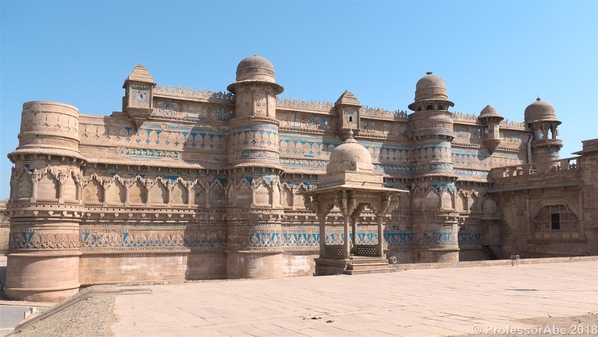
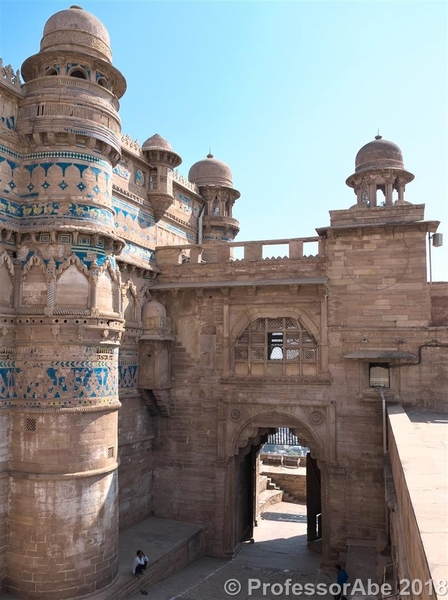
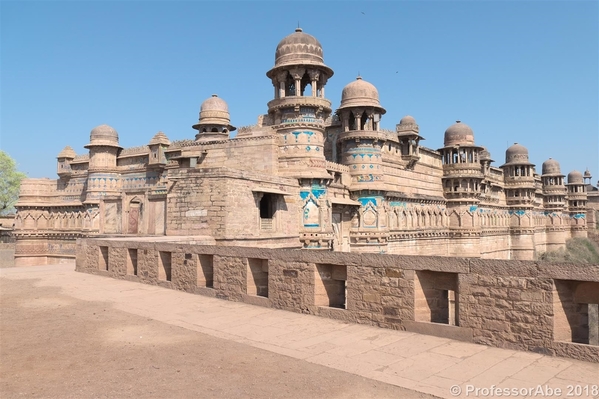
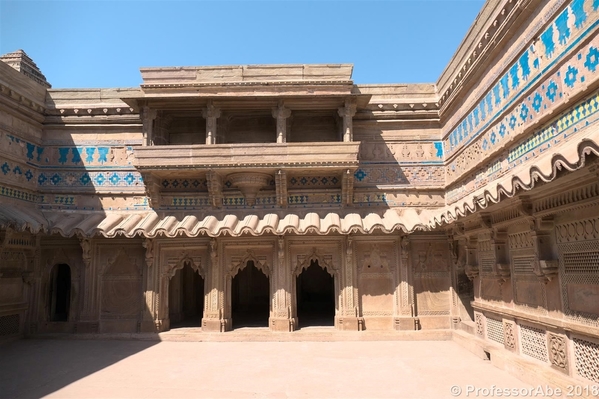
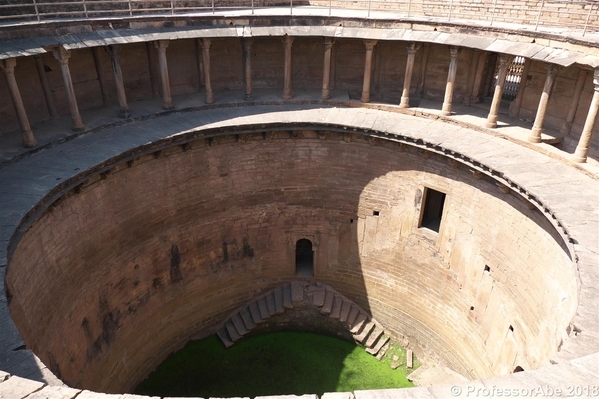
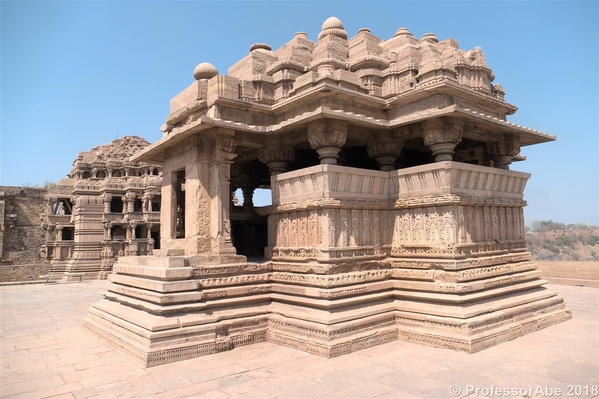
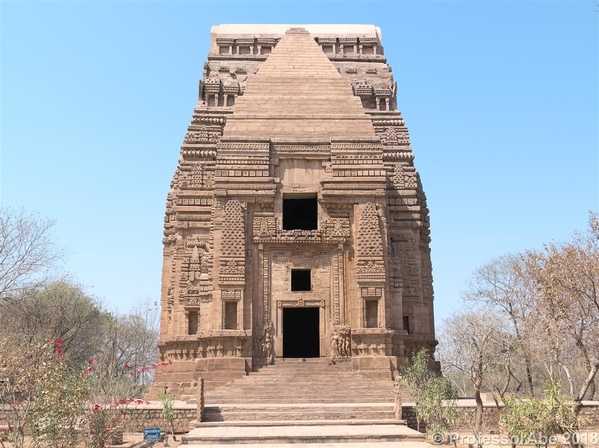
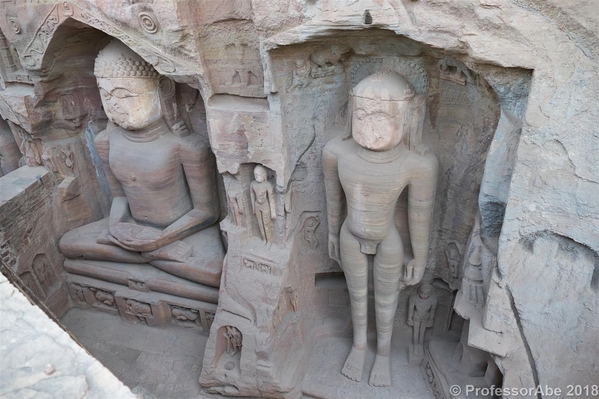


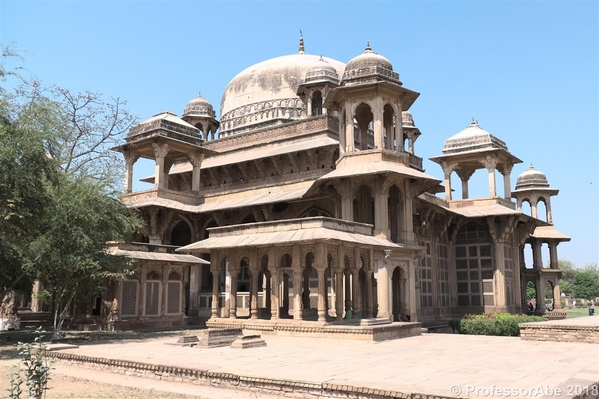



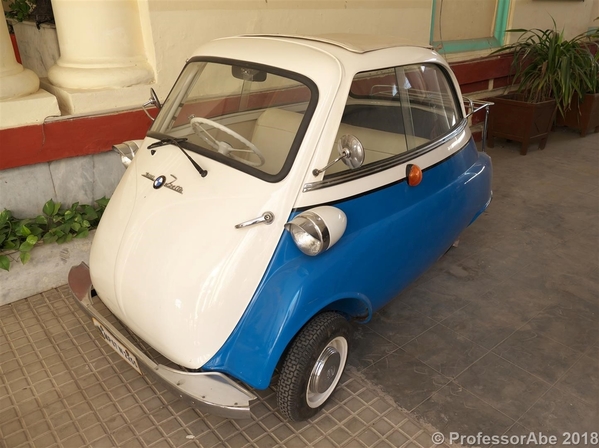


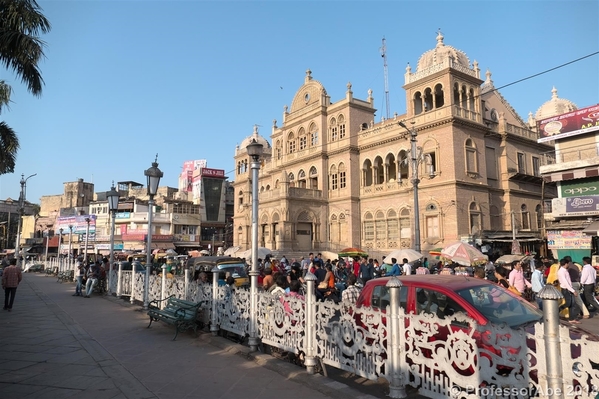
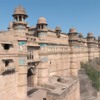








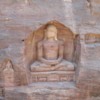



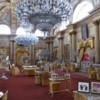
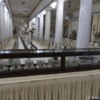

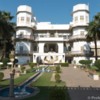
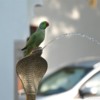

Comments (2)